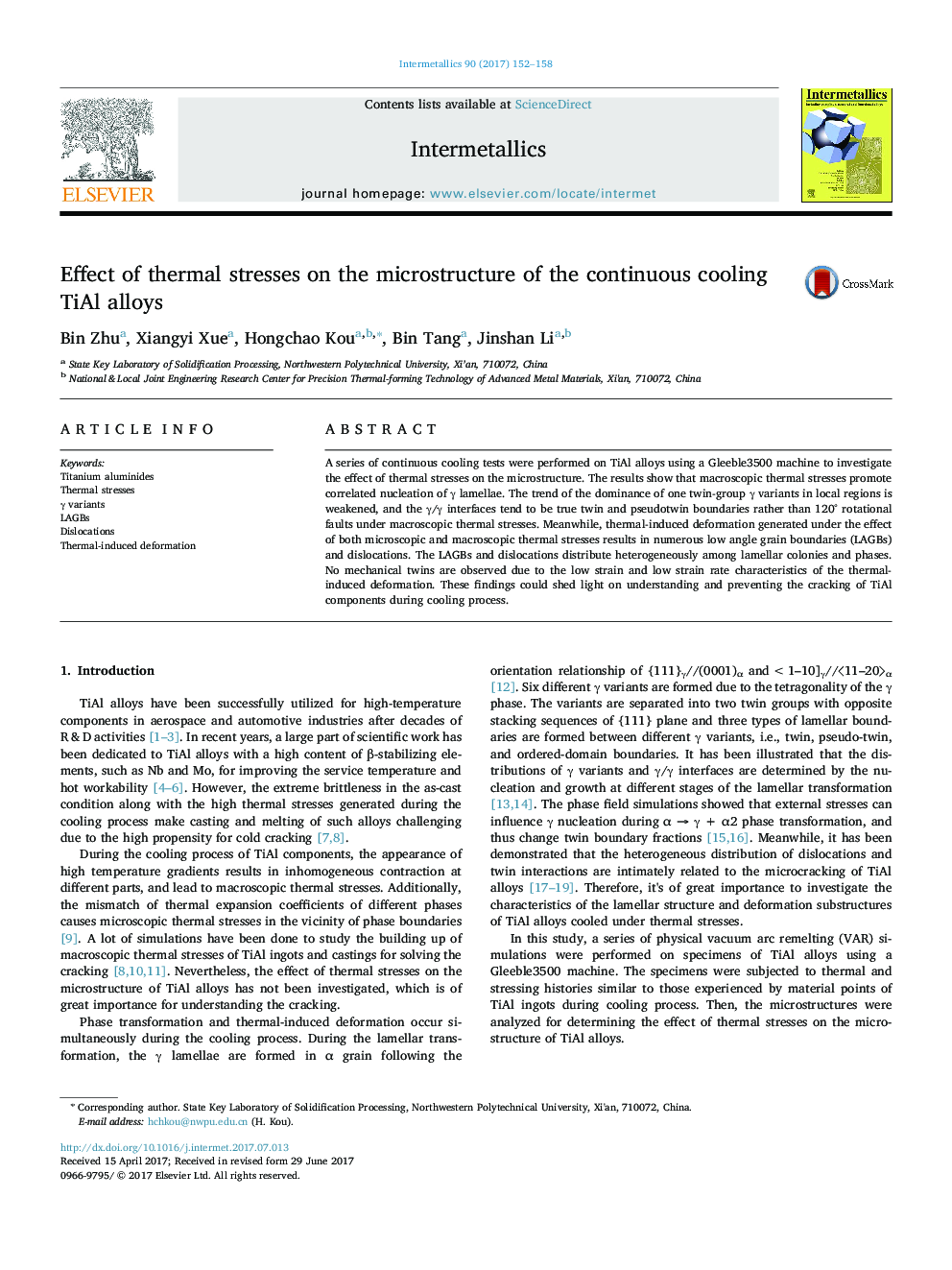| Article ID | Journal | Published Year | Pages | File Type |
|---|---|---|---|---|
| 5457579 | Intermetallics | 2017 | 7 Pages |
Abstract
A series of continuous cooling tests were performed on TiAl alloys using a Gleeble3500 machine to investigate the effect of thermal stresses on the microstructure. The results show that macroscopic thermal stresses promote correlated nucleation of γ lamellae. The trend of the dominance of one twin-group γ variants in local regions is weakened, and the γ/γ interfaces tend to be true twin and pseudotwin boundaries rather than 120° rotational faults under macroscopic thermal stresses. Meanwhile, thermal-induced deformation generated under the effect of both microscopic and macroscopic thermal stresses results in numerous low angle grain boundaries (LAGBs) and dislocations. The LAGBs and dislocations distribute heterogeneously among lamellar colonies and phases. No mechanical twins are observed due to the low strain and low strain rate characteristics of the thermal-induced deformation. These findings could shed light on understanding and preventing the cracking of TiAl components during cooling process.
Related Topics
Physical Sciences and Engineering
Materials Science
Metals and Alloys
Authors
Bin Zhu, Xiangyi Xue, Hongchao Kou, Bin Tang, Jinshan Li,
